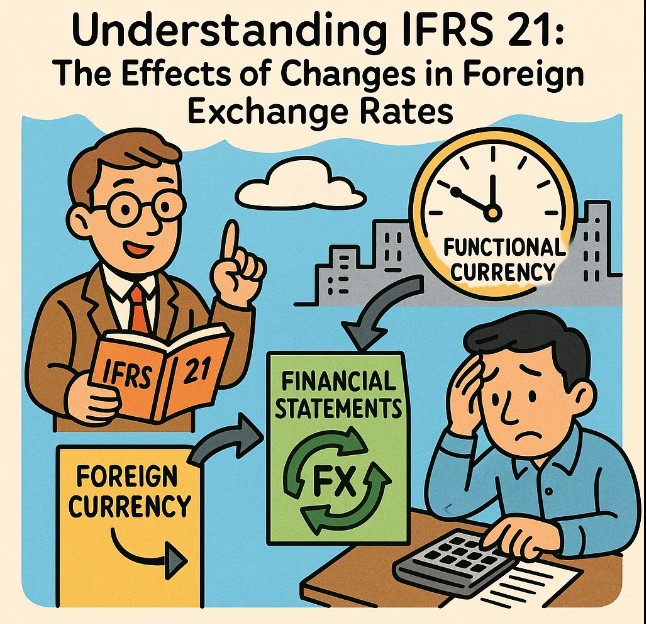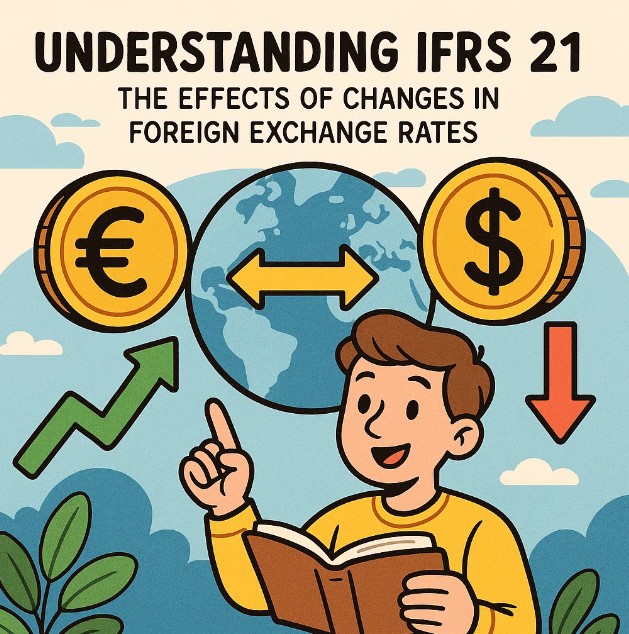
Understanding IFRS 21: The Effects of Changes in Foreign Exchange Rates
Foreign exchange rates significantly influence global business operations. Companies engaged in international trade or those with foreign subsidiaries must properly account for foreign currency transactions. This is where IFRS 21 comes into play. This standard provides comprehensive guidance on how to treat foreign currency transactions and their effects on financial statements.
Mastering the impact of foreign exchange rates is crucial for global businesses. IFRS 21 provides the roadmap to ensure that fluctuations are accounted for accurately, giving companies the clarity they need to make informed financial decisions and thrive in the international market.
What is IFRS 21?
IFRS 21 is an international accounting standard that addresses the accounting treatment of the effects of changes in foreign exchange rates. It outlines the proper way to translate foreign currency transactions, determine functional currencies, and recognize exchange differences. IFRS 21 is essential for companies involved in cross-border transactions or with foreign operations, ensuring consistent and transparent financial reporting.
Key Provisions under IFRS 21:
- Functional Currency: IFRS 21 stresses the importance of determining the functional currency for financial reporting purposes. The functional currency is the currency of the primary economic environment in which the entity operates.
- How is it determined?
The functional currency is determined based on factors such as the currency of the primary economic environment, the currency in which sales prices are denominated, and the currency influencing the entity’s costs. - Foreign Currency Transactions: When a company enters into foreign currency transactions, it must convert the foreign currency amounts into its functional currency using the spot exchange rate on the date of the transaction. If the transaction occurs over time, an average exchange rate may be used, provided it approximates the actual exchange rates at the transaction dates.
- Exchange Differences: Exchange differences occur when there is a fluctuation in exchange rates between the transaction date and the reporting date. These differences are treated as follows:
- Transaction-Based Exchange Differences: Foreign currency receivables or payables must be re-measured at the reporting date using the closing exchange rate, and the resulting exchange differences are recognized in profit or loss.
- Foreign Operations Exchange Differences: When a company has foreign subsidiaries or foreign investments, any exchange differences arising from the translation of their financial statements are recognized in other comprehensive income (OCI) and accumulated in a separate component of equity, known as the foreign currency translation reserve.
- Translation of Foreign Operations: For foreign subsidiaries, associates, or joint ventures, IFRS 21 requires the translation of their financial statements into the parent company’s functional currency. This translation is performed using:
- The closing exchange rate for balance sheet items.
- The exchange rate at the transaction date for equity items.
- Hedge Accounting: IFRS 21 also includes provisions for hedge accounting. Companies can apply hedge accounting to mitigate the impact of foreign currency risks. Instruments such as forward contracts or options can be used to hedge against these risks, with any changes in fair value of the hedging instruments recognized in profit or loss or other comprehensive income, depending on the type of hedge.

Practical Application of IFRS 21:
Let’s consider a practical example to demonstrate the application of IFRS 21:
Scenario:
Company X, located in the UK, sells products to the United States for USD 100,000, with payment expected in 60 days. During this period, the exchange rate fluctuates, and the value of the British pound depreciates against the US dollar.
- Transaction Date:
On the transaction date, the exchange rate is 1 USD = £0.75. The sale is recorded as £75,000 (100,000 * 0.75). - Reporting Date (After 60 Days):
The exchange rate has now changed to 1 USD = £0.78. The value of the receivable is now £78,000 (100,000 * 0.78).
The £3,000 difference (from £75,000 to £78,000) is recognized as an exchange difference in profit or loss. - Foreign Operations:
Suppose Company X has a subsidiary in the United States. The subsidiary’s financial statements are denominated in USD. These financial statements must be translated into pounds (GBP) at the exchange rates as at the reporting date for assets and liabilities, and using historical exchange rates for equity items.
Conclusion:
IFRS 21 ensures that businesses consistently account for the effects of foreign exchange rate fluctuations in their financial statements. This is crucial for transparency, especially for companies engaged in international business. Proper application of the provisions of IFRS 21 ensures that companies can accurately reflect the impact of foreign exchange movements on their financial performance and position.
Understanding how to handle foreign currency transactions, translate foreign operations, and account for exchange differences is critical for businesses to maintain compliance with IFRS, as well as to ensure that their financial reporting reflects their true economic reality.
Is your company prepared to handle the complexities of foreign currency transactions and exchange rate changes in its financial statements?
